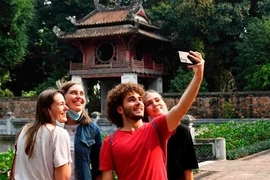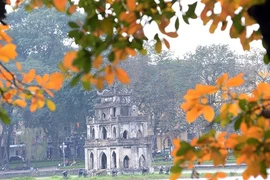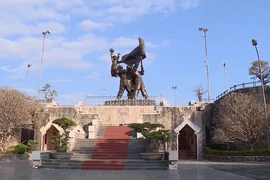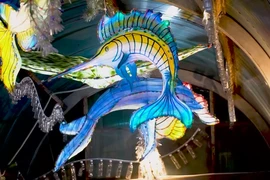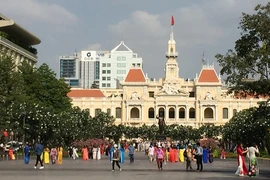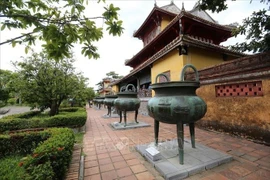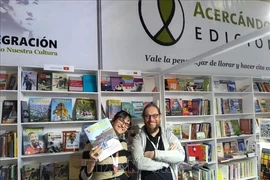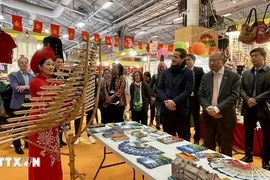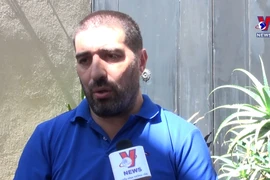Tara and Laksmindra Lokesvara Bodhisattvas statues are two examples of Buddhist influence in local culture. According to archaeological studies, these statues were made during 9th and 10th centuries under the former Champa Kingdom.
The Tara Bodhisattva statue was recognized as a national treasure in Vietnam in 2012 thanks to its rich historical, religious, and artistic values.
The statue is now preserved at the Da Nang Museum of Cham Sculpture. Its dark turquoise color is from its material, copper, now oxidized. Its replica is on display at the center of the museum.
According to anthropologists, the statue has distinctive features of the Cham people and Indochinese art. They include a squared face, long and thin unibrow, bulbous nose, wide mouth, and full lips. She has a third eye on her forehead. There, as some scholars assume, a jade used to be attached.
Her hair is a sophisticated bun wrapped around a small Buddha statue. Her upper body is naked.
Her hands, however, seem to lack magical weapons. They, according to historical documents, were accidentally broken when unearthed in 1978 in Dong Duong village, Binh Dinh commune (Now Binh Dinh Bac in Quang Nam province).
What remains on her right hand is a finger-shaped stick that is a lotus stem. Similarly, her left hand is now holding a broken item that used to be a sea snail.
According to scholars, the lotus symbolizes purity, a sharp mind, compassion, and productivity. The sea snail, on the other hand, holds the power of all sounds. It is believed to purify the world and give all species hope.
These magical weapons are typical for the religion prevailing Indravarman II era of Champa kingdom, a fusion between Buddhism and Hinduism.
The original handheld weapons, however, have not yet returned to the Bodhisattva statue.
For people in Binh Dinh commune, whose population are mostly Cham people, these are considered sacred items solemnly passed down by their ancestors.
Quang Nam Provincial People’s Committee has now dispatched a request asking the Thanh Binh district and Binh Dinh Bac commune to hand over the items to Quang Nam provincial museum and await word of the final decision./.


